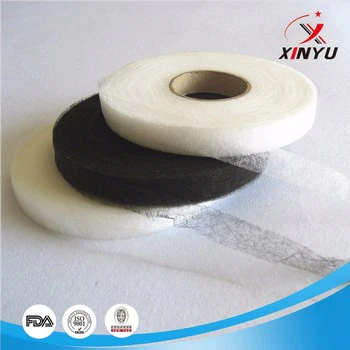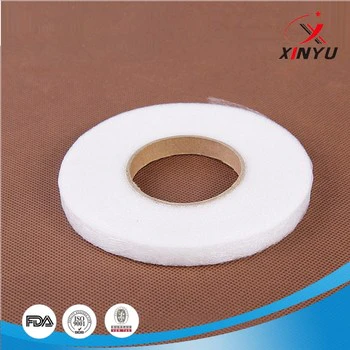What Is The Water-Blocking Tape?
Ever thought about the humble piece of tape? It's a staple in our toolboxes, right? Well, today, we're diving into a specific kind - the water-blocking tape. Now, this isn't your average run-of-the-mill adhesive strip. This little marvel is loaded with some fascinating science, and today, we're unraveling its mysteries.
What exactly is the water-blocking tape? It's a type of tape that, as the name suggests, blocks water. But it isn't for patching up your leaky garden hose. It's used in cables, specifically communication and power transmission cables, to prevent water ingress that can lead to catastrophic failures. It's a vital component that protects these cables from moisture and water damage, ensuring our communication and power networks function seamlessly.
The Science Behind Water-Blocking Tape
Getting into the nitty-gritty, let's look at what makes up the water-blocking tape. It's typically constructed with a blend of synthetic materials and superabsorbent polymers (SAPs) —the magic ingredient. The tape is designed with a layer of these SAPs sandwiched between synthetic materials, which can quickly absorb and retain a significant amount of water.
They're essentially water-loving materials that can absorb and retain extremely large amounts of a liquid relative to their own mass. In fact, they're so good that they can absorb hundreds of times their weight in water.
The tape works by a process called capillary action, where water molecules are drawn into the small spaces within the tape's material. Think of it like a bunch of tiny straws, pulling the water in and holding it tight. It's a pretty cool process, but the key takeaway here is that the water stays locked within the tape and doesn't seep into the surrounding cables. Pretty neat, right?
Different Types Of Water Blocking Tape
When it comes to dealing with water in cable systems, not all tapes are created equal. Various factors, such as the composition, design, and size of water-blocking tapes, play significant roles in their effectiveness and suitability for different applications. Now, let's delve deeper into these types and their unique characteristics.
Classification Based on Material Composition
First off, let's discuss the materials that make up water-blocking tapes. Depending on the application, the tape might require different levels of water absorption, strength, or flexibility, and this is where the choice of materials becomes crucial.
Nonwoven Fabric Tapes
The most common type of water-blocking tape consists of a nonwoven fabric substrate saturated with a superabsorbent polymer (SAP). The fabric offers strength and flexibility, while the SAP is responsible for the water-absorbing capabilities. This combination is typically used in fiber optic and copper communication cables.
Laminated Tapes
Laminated tapes take it a step further by adding an extra layer of material, such as aluminum or plastic. The additional layer provides an enhanced barrier against water, making these tapes particularly suitable for more demanding applications like power transmission cables.
Classification Based on Design and Size
The design and size of a water-blocking tape can significantly influence its performance and applications. The range of options allows engineers and technicians to pick the perfect tape for their specific needs.
Narrow vs. Wide Tapes
Narrow tapes are typically used in smaller cables or cables that require a high degree of flexibility. On the other hand, wider tapes are more suited for larger cables or those that need a stronger water barrier.
Single vs. Double-Sided Tapes
Single-sided tapes have one side coated with the superabsorbent polymer, whereas double-sided tapes have both sides coated. Double-sided tapes are ideal for applications that require higher water absorption, whereas single-sided tapes might be more appropriate for cables where only one side needs protection.
Applications Of Water Blocking Tape
Water-blocking tape plays an essential role in several industries due to its unique properties. Here are some of its key applications:
Telecommunications:
● Used in fiber optic cables to prevent water ingress that can interfere with the transmission of light signals.
● Used in copper cables to prevent corrosion and damage caused by water.
Power Transmission:
● Important in submarine power cables, which are exposed to high pressure and salty seawater. The tape prevents water from causing short circuits and protects the conductors from corrosion.
● Used in underground power cables, where moisture in the soil could potentially seep into the cables.
Aerospace Industry:
● Used in aircraft cables to prevent any water damage that could affect the reliability of the aircraft's systems.
Automotive Industry:
● Used in various automotive cables, where it protects against water ingress, ensuring the vehicle's electrical systems function correctly.
Oil and Gas Industry:
● Used in umbilicals and flexible pipes, where it prevents seawater from causing damage.
Marine Applications:
● Used in marine communication and power cables, providing protection against the harsh marine environment.
By preventing water damage, water-blocking tape ensures the reliability and durability of cable systems across multiple industries, reinforcing the networks that our modern society relies on.
Conclusion:
In conclusion, water-blocking tape is not just an adhesive strip; it's a vital guardian of our communication, power, and transportation networks. Let us appreciate its significance and the significant role it plays in keeping us connected, functional, and moving forward in this ever-advancing world.


Office Add: Shatou Industrial Area, Linjiang,
Tengqiao Town, Lucheng District, Wenzhou City,
Zhejiang Province, China.
Contact Us
Contact Person: Angle
Tel: +86-577-56976991
E-mail: xya@wzxinyu.com
Skype / Wechat: +86-13780146870
Contact Person: Suzie
Tel: +86-577-56976979
E-mail: xy03@wzxinyu.co






